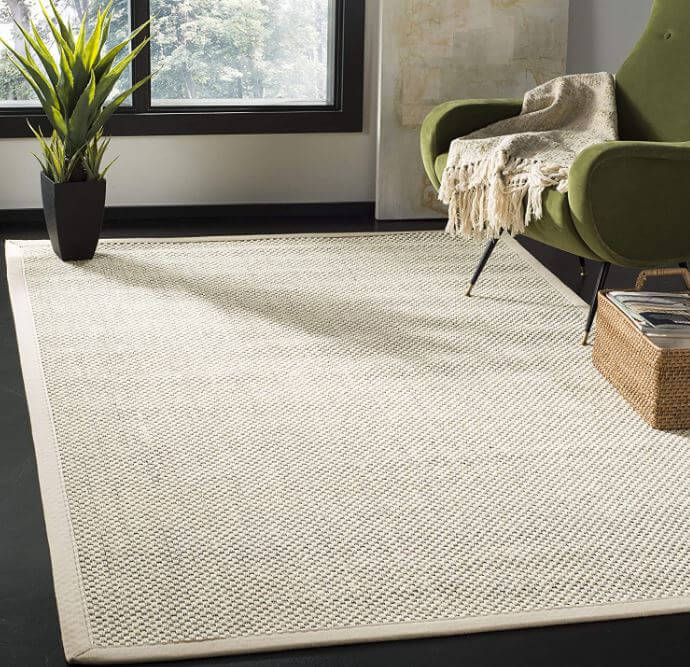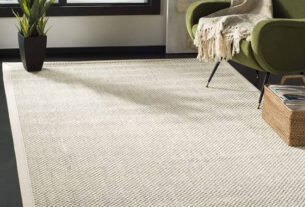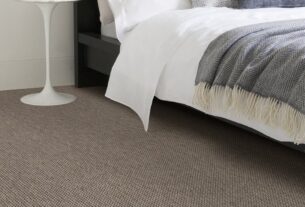Sisal carpets dubai are an excellent choice for homeowners who prioritize eco-friendliness, durability, and natural beauty. Made from the fibers of the agave plant, sisal carpets offer a robust, sustainable alternative to synthetic flooring options. Their neutral tones and unique texture make them a versatile option for various interior styles, from rustic farmhouse to modern minimalist. However, like any natural material, sisal requires proper care to maintain its beauty and extend its lifespan. In this guide, we’ll share expert tips on how to care for your sisal carpet, ensuring it remains fresh, durable, and long-lasting.
Regular Vacuuming: The Key to Preventing Dirt Build-up
One of the most important aspects of maintaining your sisal carpet is regular vacuuming. Sisal fibers can trap dust, dirt, and debris, which, over time, can cause the carpet to lose its vibrant appearance and even damage the fibers. Regular vacuuming helps prevent dirt build-up and extends the life of the carpet by keeping the fibers clean.
It’s important to use a vacuum with a suction-only setting, as sisal fibers can be sensitive to beater bars or rotating brushes. These features, found in many upright vacuums, can pull at the fibers and cause fraying. Instead, opt for a vacuum with a gentle suction function or a handheld vacuum with a soft brush attachment. Vacuum the carpet in different directions to ensure that all dirt and debris are removed, and do this at least once a week, or more frequently in high-traffic areas.
Dealing with Spills: Act Quickly to Prevent Stains
While sisal is a durable material, it is not inherently stain-resistant. The key to preventing stains on your sisal carpet is to act quickly when spills occur. Whether it’s a food spill, beverage, or pet accident, immediate attention can help prevent the liquid from soaking into the fibers and causing permanent stains.
Start by blotting the spill with a clean, dry cloth. Never rub the stain, as this can push the liquid deeper into the fibers. Once the area is blotched as much as possible, apply a small amount of mild detergent diluted with warm water to the spot. Use a soft cloth to gently scrub the stain, and then rinse the area with clean water to remove any soap residue. Be sure to blot the area dry with a towel to avoid excess moisture, as sisal fibers are prone to mold and mildew when exposed to too much water.
For tougher stains, you can consider using a specialized sisal carpet cleaner, but always test a small, inconspicuous area first to ensure it won’t damage the fibers. It’s also a good idea to avoid harsh chemicals, as these can weaken the natural fibers of the sisal and cause them to deteriorate.
Protect from Sunlight: Prevent Fading and Discoloration
While sisal carpets are naturally resilient, prolonged exposure to direct sunlight can cause the fibers to fade and discolor. To prevent this, position your sisal rug or carpet in areas that are less exposed to intense sunlight, or use window treatments like curtains or blinds to block out UV rays.
If you have a sisal carpet in a room with a lot of natural light, consider rotating the carpet regularly to ensure that different areas are exposed to sunlight equally. This will help prevent uneven fading. Additionally, placing a sisal rug on the floor in front of large windows or glass doors can be a great way to add a touch of nature to your décor while protecting your investment.
Prevent Fraying and Pilling: Keep Edges Trimmed
Sisal is a sturdy material, but the edges of your sisal carpet can be prone to fraying if not properly cared for. The key to preventing fraying is to make sure the carpet’s edges are properly sealed. Many sisal carpets come with a cotton or jute binding around the edges to help prevent fraying. However, if your carpet doesn’t have this feature, you can have it professionally bound to keep it from unraveling.
Additionally, it’s important to trim any loose fibers or frayed edges carefully with a pair of sharp scissors. Don’t pull at the loose fibers, as this can cause further damage. If you notice pilling or small balls of fiber on the surface of your sisal carpet, it’s best to remove them gently by hand or with a fabric shaver to prevent them from becoming a bigger issue.
Professional Cleaning: Keep It Fresh with Periodic Deep Cleaning
Though regular vacuuming and spot cleaning can go a long way in maintaining your sisal carpet, periodic professional cleaning is essential for ensuring its longevity. Over time, dirt and oils can build up within the fibers, which regular cleaning might not fully address. Hiring a professional cleaning service with experience in natural fiber carpets can help restore your sisal to its original condition.
A professional cleaner will use the right equipment and techniques to deep clean your sisal carpet without damaging the fibers. They may use steam cleaning or dry cleaning methods, depending on the condition of the carpet and its specific needs. Regular professional cleaning can help remove deep-set stains, eliminate odors, and ensure that your sisal carpet stays fresh and clean for years to come.
Rotating and Repositioning: Even Out Wear and Tear
In high-traffic areas, your sisal carpet may show signs of wear and tear more quickly than in other parts of the house. To combat this, it’s a good idea to rotate your carpet every few months to evenly distribute the pressure. This will prevent one side from becoming excessively worn down, and it will help keep the carpet looking newer for longer.
If you have heavy furniture on your sisal carpet, try rearranging it every now and then to prevent indentations from forming. While sisal is resilient, heavy furniture can leave permanent marks if left in one place for too long.
Maintain Moisture Control: Avoid Excessive Dampness
One of the major drawbacks of sisal carpets is their susceptibility to moisture. While they are resistant to stains, they are not impervious to water. Excessive moisture can cause the fibers to weaken, leading to mold or mildew growth. This can be especially problematic in areas with high humidity.
To avoid this, keep your sisal carpet in a well-ventilated area, and avoid placing it in damp or humid rooms like basements or bathrooms. If your sisal carpet gets wet, it’s essential to dry it immediately by blotting it with a dry cloth and then allowing it to air dry. Never use a hairdryer or heat source to speed up the drying process, as this can cause the fibers to warp.
Conclusion
Sisal carpets dubai doesn’t have to be difficult or time-consuming, but it does require attention and consistency. By following these expert tips—regular vacuuming, quick spill response, sunlight protection, professional cleaning, and moisture control—you can ensure that your sisal carpet remains beautiful, durable, and eco-friendly for years to come. With proper care, your sisal carpet will continue to be a stylish and sustainable addition to your home.





